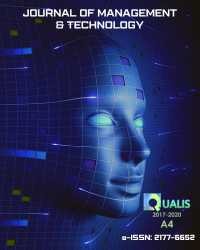Technology transfer through fdi flows from Vietnam’s perspective
DOI:
https://doi.org/10.20397/2177-6652/2025.v25i1.3116Palavras-chave:
technology transfer, , FDI, ;VietnamResumo
This paper aims to study and analyze the efficiency of technology transfer through foreign direct investment projects (FDI) flows, on the basis of analyzing the specific case of Vietnam. Science and technology in general and technology transfer in particular, is considered as one of the key issues strongly promoted by Governments, and one of the most effective and economical solutions is to effectively exploit technology transfer through FDI projects. Hence, this paper concentrates to identify the positive and negative changes to technology transfer via FDI flows by assessing the current situation, trends and proposing recommendations.
Referências
Chengliang Liu and Qingbin Guo, (2019), “Technology Spillover Effect in China: The Spatiotemporal Evolution and Its Drivers
Decree 133/2008/NĐ-CP of the Government dated December 31, 2008 detailing and guiding the implementation of the Law on Technology Transfer
Kinoshita, Y., (2000), “R&D and Technology Spillovers via FDI: Innovation and Absorptive Capacity”, CERGE-EI, mimeo
Johannes Stephan et al, (2006), “Technology Transfer via Foreign Direct Investment in Central and Eastern Europe”.
Javorcik, B, (2004), “Does foreign direct investment increase the productivity of domestic firms? In search of spillovers through backward linkages”
Jože P. Damijan at al, (2003), “Technology Transfer through FDI in Top-10 Transition Countries: How Important are Direct Effects, Horizontal and Vertical Spillovers?”
Mie Oba, (2019), RCEP Negotiations for the Reshaping of the Liberal Economic Order; Trade and Economic Connectivity in the Age of Uncertainty; https://www.kas.de/documents/288143/6741384/panorama_trade_MieOba_RCEPNegotiations+fortheReshapingoftheLiberalEconomicOrder.pdf
Nguyen Mai (2017), “FDI with technology transfer”, Investor Magazine
Nguyen Thi Phuong, “Inadequacies in technology transfer of FDI enterprises”, http://vietthink.vn/264/print-article.html”
Nguyen Thi Van Anh "Talking about amending the Law on Technology Transfer from Comparative Approach to the Law on Science and Technology" https://thongtinphapluatdansu.edu.vn/2015/10/10/bn-ve-sua-doi-luat-chuyen-giao-cng-nghe-tiep-can-tu-so-snh-voi-luat-khoa-hoc-v-cng-nghe/
Nawaz Sharif, (1983), Management of Technology Transfer and Development, UNESCAP, India.
Pham Chi Trung (2018), “Technology transfer from FDI: a new attraction strategy”, Vietnam Science and Technology Journal
Qiaomin Li, (2014), “Analyzing Effects of RCEP on Foreign Direct Investment in a Firm Heterogeneity CGE Framework”
Samet Akyuz, (2018), Factors affecting technology spillovers from Multinational Enterprises (MNEs) in backward linkages in the Turkish manufacturing sector: lessons for Investment Promotion Agencies (IPAs)
Shushu Feng, (2019), “Technology Transfer Spillover from FDI-A Comprehensive Literature Review”, Advances in Economics, Business and Management Research, volume 146.
Shuzhen Zhou and Feng Peng, (2021), “Effect of International Technology Transfer on the Technical Efficiency of High-Tech Manufacturing in China”: A RAGA-PP-SFA Analysis
Thao Mien (2022), “Attracting foreign direct investment: Commitment to technology transfer must be a mandatory condition”, Vietnam Financial Times
Tran Van Tho, (1993), “Technology Transfer in the Asian Pacific Region: Implications of Trends since the Mid-1980s”
Xu, B, (2000). “Multinational enterprises, technology diffusion, and host country productivity growth”.
Wolffgang Keller, (2010), International trade, Foreign Direct investment and technology spillovers
Downloads
Publicado
Como Citar
Edição
Seção
Licença
Copyright (c) 2025 Revista Gestão & Tecnologia

Este trabalho está licenciado sob uma licença Creative Commons Attribution-NonCommercial 4.0 International License.
Os direitos, inclusive os de tradução, são reservados. É permitido citar parte de artigos sem autorização prévia desde que seja identificada a fonte. A reprodução total de artigos é proibida. Em caso de dúvidas, consulte o Editor.


